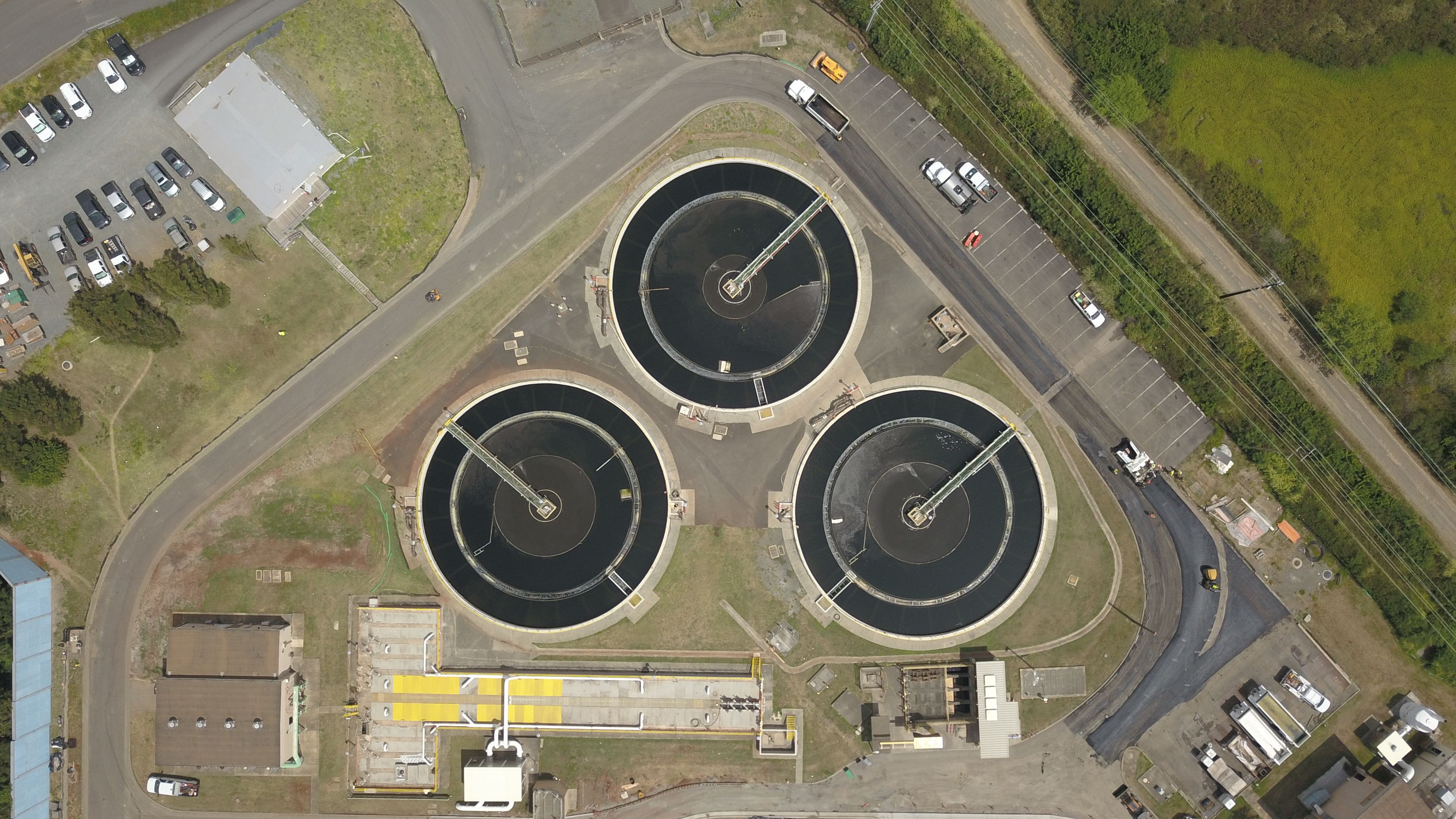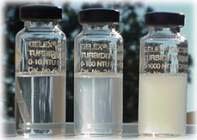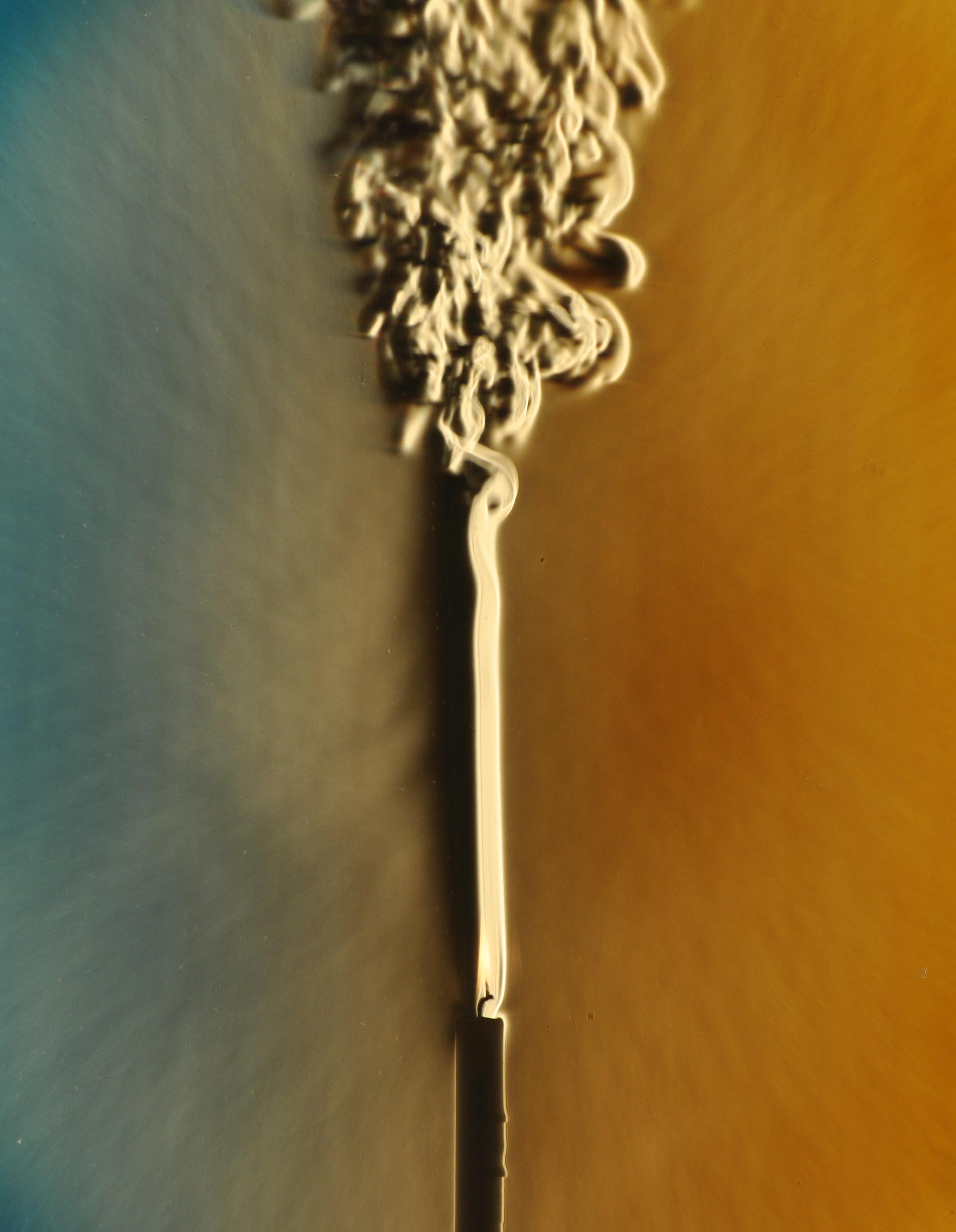|
Settling
Settling is the process by which particulates move towards the bottom of a liquid and form a sediment. Particles that experience a force, either due to gravity or due to Centrifuge, centrifugal motion will tend to move in a uniform manner in the direction exerted by that force. For gravity settling, this means that the particles will tend to fall to the bottom of the vessel, forming sludge or slurry at the vessel base. Settling is an important operation in many applications, such as mining, wastewater and drinking water treatment, biological science, outer space, space rocket propellant, propellant reignition, and scooping. Physics For settling particles that are considered individually, i.e. dilute particle solutions, there are two main forces enacting upon any particle. The primary force is an applied force, such as gravity, and a Drag (physics), drag force that is due to the motion of the particle through the fluid. The applied force is usually not affected by the part ... [...More Info...] [...Related Items...] OR: [Wikipedia] [Google] [Baidu] |
Clarifier
Clarifiers are settling tanks built with mechanical means for continuous removal of solids being deposited by Sedimentation (water treatment), sedimentation. A clarifier is generally used to remove solid particulates or suspended solids from liquid for clarification and/or thickening. Inside the clarifier, solid contaminants will settle down to the bottom of the tank where it is collected by a scraper mechanism. Concentrated impurities, discharged from the bottom of the tank, are known as sludge, while the particles that float to the surface of the liquid are called scum. Applications Pretreatment Before the water enters the clarifier, coagulation and flocculation reagents, such as polyelectrolytes and ferric sulfate,Brentwood Industries, Inc. (2013)"Tube Settler Systems For Clarification." Accessed 14 October 2013. can be added. These reagents cause finely suspended particles to clump together and form larger and denser particles, called flocs, that settle more quickly and stab ... [...More Info...] [...Related Items...] OR: [Wikipedia] [Google] [Baidu] |
Terminal Velocity
Terminal velocity is the maximum speed attainable by an object as it falls through a fluid (air is the most common example). It is reached when the sum of the drag force (''Fd'') and the buoyancy is equal to the downward force of gravity (''FG'') acting on the object. Since the net force on the object is zero, the object has zero acceleration. For objects falling through air at normal pressure, the buoyant force is usually dismissed and not taken into account, as its effects are negligible. As the speed of an object increases, so does the drag force acting on it, which also depends on the substance it is passing through (for example air or water). At some speed, the drag or force of resistance will be equal to the gravitational pull on the object. At this point the object stops accelerating and continues falling at a constant speed called the terminal velocity (also called settling velocity). An object moving downward faster than the terminal velocity (for example because it ... [...More Info...] [...Related Items...] OR: [Wikipedia] [Google] [Baidu] |
Turbidity
Turbidity is the cloudiness or haziness of a fluid caused by large numbers of individual particles that are generally invisible to the naked eye, similar to smoke in air. The measurement of turbidity is a key test of both water clarity and water quality. Fluids can contain suspended solid matter consisting of particles of many different sizes. While some suspended material will be large enough and heavy enough to settle rapidly to the bottom of the container if a liquid sample is left to stand (the settable solids), very small particles will settle only very slowly or not at all if the sample is regularly agitated or the particles are colloidal. These small solid particles cause the liquid to appear turbid. Turbidity (or haze) is also applied to transparent solids such as glass or plastic. In plastic production, haze is defined as the percentage of light that is deflected more than 2.5° from the incoming light direction. Causes and effects Turbidity in open water may be ca ... [...More Info...] [...Related Items...] OR: [Wikipedia] [Google] [Baidu] |
Sediment
Sediment is a solid material that is transported to a new location where it is deposited. It occurs naturally and, through the processes of weathering and erosion, is broken down and subsequently sediment transport, transported by the action of wind, water, or ice or by the force of gravity acting on the particles. For example, sand and silt can be carried in suspension (chemistry), suspension in river water and on reaching the sea bed deposited by sedimentation; if buried, they may eventually become sandstone and siltstone (sedimentary rocks) through lithification. Sediments are most often transported by water (fluvial, fluvial processes), but also wind (aeolian processes) and glaciers. Beach sands and stream channel, river channel deposits are examples of fluvial transport and deposition (geology), deposition, though sediment also often settles out of slow-moving or standing water in lakes and oceans. Desert sand dunes and loess are examples of aeolian transport and deposition. ... [...More Info...] [...Related Items...] OR: [Wikipedia] [Google] [Baidu] |
Lamella Clarifier
A lamella clarifier or inclined plate settler (IPS) is a type of clarifier designed to remove particulates from liquids. Range of applications Lamella (materials), Lamella clarifiers can be used in a range of industries, including mining and metal finishing, as well as to treat groundwater, industrial process water and Backwashing (water treatment), backwash from sand filters. Lamella clarifiers are ideal for applications where the solids loading is variable and the solids sizing is fine. They are more common than conventional clarifiers at many industrial sites, due to their smaller footprint. One specific application is pre-treatment for effluent entering Membrane technology, membrane filters. Lamella clarifiers are considered one of the best options for pre-treatment ahead of ultrafiltration. Their all-steel design minimizes the chances that part of the inclined plate will chip off and be carried over into the membrane, especially compared to tube settlers, which are made of p ... [...More Info...] [...Related Items...] OR: [Wikipedia] [Google] [Baidu] |
Reynolds Number
In fluid dynamics, the Reynolds number () is a dimensionless quantity that helps predict fluid flow patterns in different situations by measuring the ratio between Inertia, inertial and viscous forces. At low Reynolds numbers, flows tend to be dominated by laminar flow, laminar (sheet-like) flow, while at high Reynolds numbers, flows tend to be turbulence, turbulent. The turbulence results from differences in the fluid's speed and direction, which may sometimes intersect or even move counter to the overall direction of the flow (Eddy (fluid dynamics), eddy currents). These eddy currents begin to churn the flow, using up energy in the process, which for liquids increases the chances of cavitation. The Reynolds number has wide applications, ranging from liquid flow in a pipe to the passage of air over an aircraft wing. It is used to predict the transition from laminar–turbulent transition, laminar to turbulent flow and is used in the scaling of similar but different-sized fl ... [...More Info...] [...Related Items...] OR: [Wikipedia] [Google] [Baidu] |
Coagulation (water Treatment)
In water treatment, coagulation and flocculation involve the addition of compounds that promote the clumping of fine floc into larger floc so that they can be more easily separated from the water. Coagulation is a chemical process that involves neutralization of charge whereas flocculation is a physical process and does not involve neutralization of charge. The coagulation-flocculation process can be used as a preliminary or intermediary step between other water or wastewater treatment processes like filtration and sedimentation. Iron and aluminium salts are the most widely used coagulants but salts of other metals such as titanium and zirconium have been found to be highly effective as well. Factors Coagulation is affected by the type of coagulant used, its dose and mass; pH and initial turbidity of the water that is being treated; and properties of the pollutants present. The effectiveness of the coagulation process is also affected by pretreatments like oxidation. Mechani ... [...More Info...] [...Related Items...] OR: [Wikipedia] [Google] [Baidu] |
Waste Water Treatment
Wastewater treatment is a process which removes and eliminates contaminants from wastewater. It thus converts it into an effluent that can be returned to the water cycle. Once back in the water cycle, the effluent creates an acceptable impact on the environment. It is also possible to reuse it. This process is called water reclamation. The treatment process takes place in a wastewater treatment plant. There are several kinds of wastewater which are treated at the appropriate type of wastewater treatment plant. For domestic wastewater the treatment plant is called a Sewage Treatment. Municipal wastewater or sewage are other names for domestic wastewater. For industrial wastewater, treatment takes place in a separate Industrial wastewater treatment, or in a sewage treatment plant. In the latter case it usually follows pre-treatment. Further types of wastewater treatment plants include Agricultural wastewater treatment and leachate treatment plants. One common process in wastewate ... [...More Info...] [...Related Items...] OR: [Wikipedia] [Google] [Baidu] |
Food Processing
Food processing is the transformation of agricultural products into food, or of one form of food into other forms. Food processing takes many forms, from grinding grain into raw flour, home cooking, and complex industrial methods used in the making of convenience foods. Some food processing methods play important roles in reducing food waste and improving food preservation, thus reducing the total environmental impact of agriculture and improving food security. The Nova classification groups food according to different food processing techniques. Primary food processing is necessary to make most foods edible while secondary food processing turns ingredients into familiar foods, such as bread. Tertiary food processing results in ultra-processed foods and has been widely criticized for promoting overnutrition and obesity, containing too much sugar and salt, too little fiber, and otherwise being unhealthful in respect to dietary needs of humans and farm animals. Processin ... [...More Info...] [...Related Items...] OR: [Wikipedia] [Google] [Baidu] |
Storage Tank
Storage tanks are containers that hold liquids or compressed gases. The term can be used for reservoirs (artificial lakes and ponds), and for manufactured containers. The usage of the word "tank" for reservoirs is uncommon in American English but is moderately common in British English. In other countries, the term tends to refer only to artificial containers. In the U.S., storage tanks operate under no (or very little) pressure, distinguishing them from ''Pressure vessel, pressure vessels''. Tanks can be used to hold materials as diverse as milk, water, waste, petroleum, Chemical industry, chemicals, and other Dangerous goods, hazardous materials, all while meeting industry standards and regulations. Storage tanks are available in many shapes: vertical and horizontal cylindrical; open top and closed top; flat bottom, cone bottom, slope bottom and dish bottom. Large tanks tend to be vertical cylindrical, with flat bottoms, and a fixed frangible or floating roof, or to have roun ... [...More Info...] [...Related Items...] OR: [Wikipedia] [Google] [Baidu] |
Impact Pressure
In compressible fluid dynamics, impact pressure ( dynamic pressure) is the difference between total pressure (also known as pitot pressure or stagnation pressure) and static pressure. In aerodynamics notation, this quantity is denoted as q_c or Q_c. When input to an airspeed indicator, impact pressure is used to provide a calibrated airspeed reading. An air data computer with inputs of pitot and static pressures is able to provide a Mach number and, if static temperature is known, true airspeed. Some authors in the field of compressible flows use the term ''dynamic pressure'' or ''compressible dynamic pressure'' instead of ''impact pressure''. L. J. Clancy (1975) ''Aerodynamics'', Section 3.12 and 3.13"the dynamic pressure is equal to ''half rho vee squared'' only in incompressible flow."Houghton, E.L. and Carpenter, P.W. (1993), ''Aerodynamics for Engineering Students'', Section 2.3.1 Isentropic flow In isentropic flow the ratio of total pressure to static pressure is given ... [...More Info...] [...Related Items...] OR: [Wikipedia] [Google] [Baidu] |








